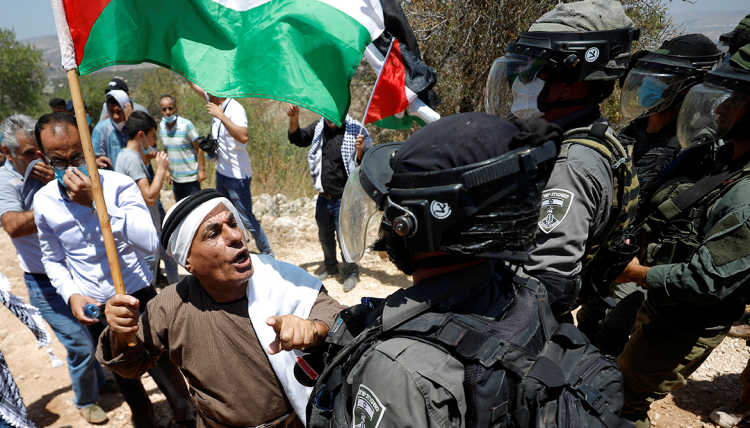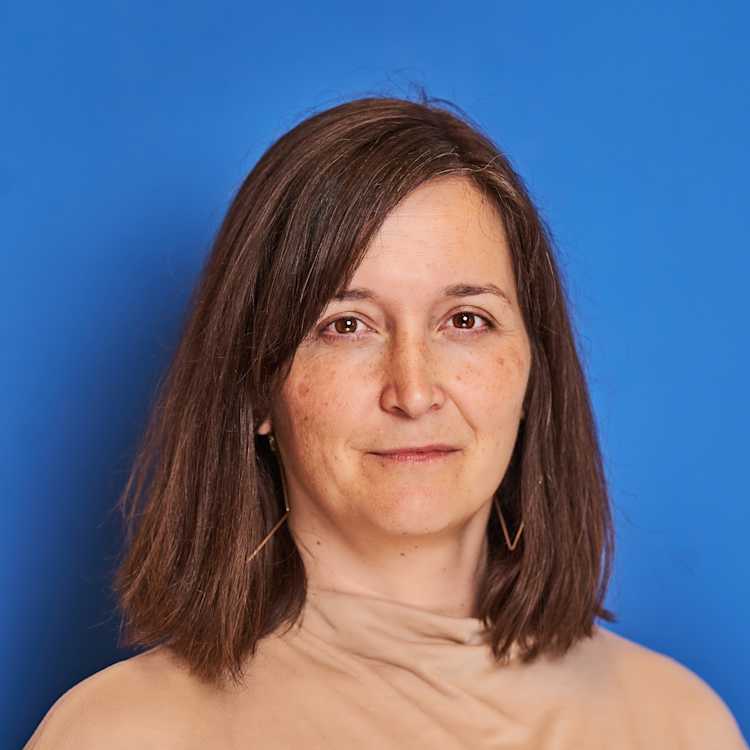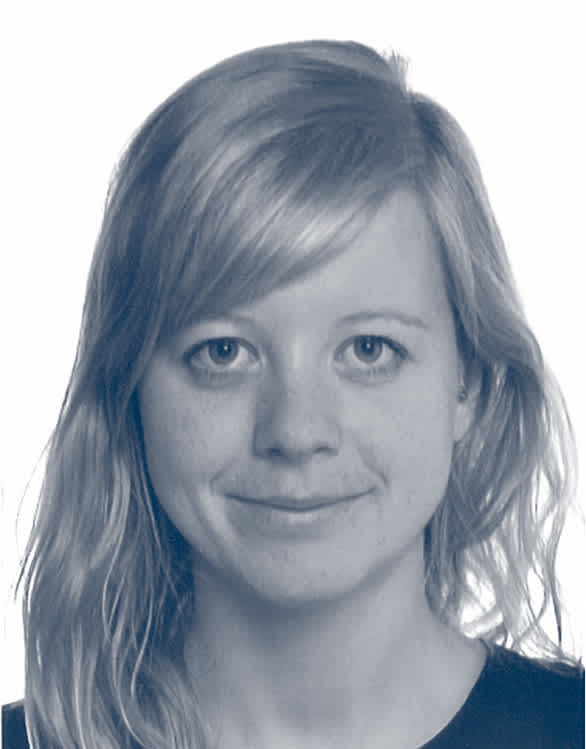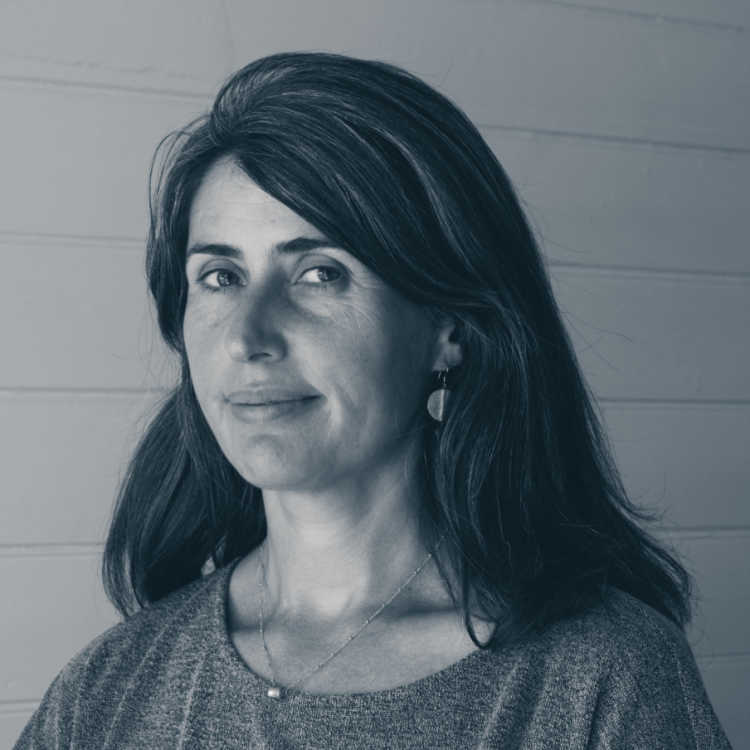- Home
- Publications
- GIGA Focus
- The "Victor’s Peace" in Syria and the Limits of Multilateral Policies
GIGA Focus Middle East
The "Victor’s Peace" in Syria and the Limits of Multilateral Policies
Number 7 | 2019 | ISSN: 1862-3611

As of the end of 2019, the regime under President Bashar al-Assad, along with Russia and Iran, controls almost three-quarters of Syrian territory. Despite ongoing fighting for the last-remaining rebel stronghold of Idlib as well as fragmented territorial control in the north-east, the war in Syria has been decided militarily.
The “victor’s peace” in Syria makes clear the survival of the repressive and corrupt Assad dictatorship, which still does not offer the large majority of the remaining population any security or life prospects.
The regime’s core elite currently consists of the president’s closest family members – this includes his brother Maher and wife Asma.
After eight years of war, the Syrian military and economic elites cannot be clearly distinguished. No members of these elite groups can absolve themselves of the accusation of being, at least indirectly, co-responsible for horrendous human rights abuses.
Although Iran and Russia repeatedly ensured the regime’s survival during the course of war, their influence on the Syrian elite has declined recently.
Policy Implications
The Assad regime’s military victory has further narrowed the diplomatic options of European nations. An international reconstruction programme for Syria should be ruled out for the near future, as it would help to consolidate the current authoritarian and wartime economic structures. Germany should therefore focus on becoming increasingly engaged in related areas within a multilateral framework. This would entail increased documentation of human rights violations and a greater number of international prosecutions of such abuses.
Syria in 2019: The Current Situation and the Emerging “Victor’s Peace”
As of the end of 2019, the regime under President Bashar al-Assad, along with its allies Russia and Iran, controls almost three-quarters of Syrian territory. The beginning of this development, which in retrospect was probably decisive for the war, was marked by Russia’s massive intervention in Syria in September 2015, followed by the brutal recapture of the northern Syrian metropolis of Aleppo in 2016–2017. With the help of the Russian air force and various militia groups – some of which are financed by Iran – the forces of the Syrian regime managed to gradually retake the former rebel strongholds of Dar‘a in the south-west and the Ghouta to the east of Damascus as well as the surrounding areas of the central cities of Homs and Hama during 2017 and 2018. The opposition fighters living in these areas and large sections of the civilian population then fled to the only remaining rebel stronghold of Idlib in north-west Syria.
Since then, approximately 3 million people have been living in Idlib – about 1.5 million of whom are internally displaced persons from other parts of the country. While the humanitarian situation on the ground gradually deteriorated, the Russian–Turkish agreement of September 2018 ensured that the planned large-scale offensive of the Syrian regime was postponed. After the gradual erosion of Russia and Turkey’s arrangement – which included the Turkish containment of the radical Islamist group the Committee for the Liberation of Greater Syria (HTS – Hay’at Tahrir ash-Sham), which was formerly associated with al-Qaeda – the Syrian and Russian air forces launched their offensive at the end of April 2019. The ferocious fighting over Idlib from April to December 2019 resulted in the deaths of thousands of civilians and sparked new refugee movements within the surrounded region.
The region east of the River Euphrates is the second area still being contested in Syria. The announcement by President Trump on 7 October 2019 that US troops would completely withdraw from Syria made an invasion by the Turkish military possible here. The incursion of Turkey’s ground troops led to the expulsion of the Kurdish People’s Defense Units (YPG – Yekeniyen Parastina Gel), which had previously controlled large parts of this border region and enjoyed the protection of US troops in their struggle against the radical Islamic State (IS). Since Washington again changed its policy, deciding to leave a temporary contingent of US troops in north-east Syria, Russia – as the most influential external actor in Syria – came to an agreement with Turkey at the end of October 2019 to establish a safe zone. The zone, controlled by the Turkish military, currently stretches about 100 kilometres from the cities of Tall Abyad to Ra’s al-‘Ayn along the Syrian–Turkish border. In response to the Turkish offensive, the Syrian regime also sent troops to the north-east, thus contributing to the complex form of fragmented territorial control that is currently emerging in the region between the Kurdish YPG, the Syrian army, and the troops of Russia, Turkey, and the US. The situation is fragile and could be further destabilised by the possible regrouping of the IS, which saw many of its fighters manage to flee from the Kurdish-controlled prisons in north-east Syria in the course of the Turkish offensive.
Despite the ongoing fighting for Idlib in the north-west and the complex, fragmented territorial control in the north-east, in the wider context of the Syrian war, a “victor’s peace” is emerging for the regime under President Bashar al-Assad and his key allies Russia and Iran. Therefore, in the near future, representatives of the Assad regime are likely to become increasingly important to the country’s domestic and foreign policy fortunes.
The Syrian Regime before and after 2011
Since 1970, Syria has been ruled by a presidential-authoritarian regime in which four mutually overlapping secret services played a central role. Internally – that is, vis-à-vis various members of the elite – these secret services carried out mutual surveillance in order to specifically contain the danger of military coups, which characterised Syria up to the 1960s. Externally – that is, vis-à-vis large sections of the population – their task was to control, intimidate, and persecute individuals, families, and entire social groups. Syria is traditionally one of the most repressive authoritarian regimes in the Middle East.
In addition to repression, co-optation (i.e. the strategic linking of individuals and social groups to the ruling regime) constituted a second central mechanism for the exercise of power in Syria. Representatives of influential social groups were simultaneously bound to and made dependent on the regime through various means of patronage, such as the allocation of posts, money, and business opportunities. A precondition for the maintenance of such patron–client networks was the constant flow of resources, including opportunities for self-enrichment with impunity.
These traditional elements typical of the exercise of rule in Syria have been facing important processes of change since 2000 following the presidential succession. Whereas Hafiz al-Assad’s security services were complemented by the state bureaucracy and the Arab Socialist Ba‘th Party, two other central pillars of power, their influence has declined significantly under his son Bashar (Hinnebusch 2011). After taking power, Bashar al-Assad’s political focus was on further enhancing the security apparatus. His younger brother Maher held a prominent position as commander of the Syrian Republican Guard and the 4th Armoured Division of the Syrian army. At the same time, key security barons during the Hafiz period were stripped of power and replaced by loyal followers, many of them Alawi. Also, a new class of crony capitalists emerged as a result of the economic reforms that were introduced after the turn of the century. Rami Makhlouf, the president’s cousin and Syria’s richest business person in the pre-war period, and the Sunni entrepreneur Muhammad Hamsho were the most prominent amongst this new economic elite (Daher 2019a).
Against the backdrop of this regime structure, the Syrian uprising of March 2011 – which was inspired by the uprisings in Egypt, Libya, Tunisia, and Yemen – came as a shock to President Bashar al-Assad and the regime elite. The security apparatus reacted extremely violently to the first protests in Dar‘a in south Syria. However, rather than curbing them, it caused the anti-regime demonstrations to spread throughout the country with the exception of the central cities of Aleppo and Damascus (De Juan and Bank 2015). In addition to the massive use of force by the regime at the beginning, three other overarching dynamics were responsible for rapidly transforming the Syrian uprising into a fully fledged, internationalised civil war: the militarisation of the state and opposition from summer 2011, the confessionalisation of the state with Alawi–Sunni enemy images, and the regionalisation and internationalisation of the conflict actors.
The rapid and massive escalation of violence also meant that many soldiers deserted the Syrian army and joined some of the opposition rebels of the Free Syrian Army. However, these consisted almost exclusively of lower- and middle-ranked soldiers, as higher-ranked officers and representatives of the civilian elite remained largely loyal to the regime (Albrecht and Köhler 2018). Two exceptions were Manaf Tlass and Riyad Hijab. Tlass, son of the long-serving defence minister Mustafa Tlass (1972–2002), deserted in May 2011, while Riyad Hijab, former agriculture minister (2011–2012) and former prime minister (June–August 2012) turned his back on the Assad regime towards the end of summer 2012. However, these two high-profile cases were exceptions that confirmed the rule that members of the Syrian extended elites did not openly rebel against the regime during the Arab uprisings.
The Core Elite Today: More Assadi than Alawi
The composition of the Syrian core elite has not fundamentally changed during the eight-year war; though some new trends have been observed recently. One clear continuity, however, is that President Bashar al-Assad, as head of state and symbolic figure of the political status quo, remains the most important decision maker at the national level. In addition, the influence of Bashar’s younger brother Maher, who is in charge of the Syrian Republican Guard and the 4th Armoured Division of the Syrian army, has remained constant and may even have grown. Having been in command during some of the war’s decisive battles, Maher was occasionally the regime’s most important decision maker after 2011. A more recent development is the growing role played by the president’s wife, Asma al-Assad, who has for many years been a key media figurehead for the regime: in August and September 2019 the assets of the al-Bustan Foundation and Syriatel, one of Syria’s two largest telecommunications providers and worth millions, were awarded to the Syria Trust for Development, which she controls.
What is of particular political interest about this transfer is that this fortune comes from Rami Makhlouf – Bashar al-Assad’s cousin and close friend since childhood and also Syria’s richest business person in the pre-war period. After war broke out in 2011, Rami Makhlouf publicly remained loyal to the regime. One can assume that his relative disempowerment, or at least the threat to his previously untouchable position, is intended to show that even members of the core elite, including the extended presidential family, are not untouchable in the current climate, which is economically precarious for the regime. The journalist Chloe Cornish suspects that Rami Makhlouf, as a business person, did not provide the regime with sufficient foreign currency and was therefore punished (Cornish 2019). Another indication that Makhlouf has been marginalised is the closure of the Syrian Social Nationalist Party (SSNP) office and the disarmament of the armed al-Bustan militia in the port city of Latakia in early September 2019 – both of which are headed by Makhlouf.
In addition to the three members of the presidential family who are particularly influential at this time, Syria’s core elite currently includes some of the key decision makers in the military arena. This is no surprise from the regime’s standpoint given the precarious state of war that has persisted since 2011. Accordingly, Major General Ali Mamlouk, the Circassian head of the General Intelligence Directorate, is also a member of the Syrian core elite. In 2019, he was also appointed deputy president (The Syrian Observer 2019). Previously, other top representatives of the security apparatus old guard – namely, Major General Jamil al-Hassan, an Alawi and head of the Air Force Intelligence Directorate, and Fahd Jassem al-Freij, a Sunni and former defence minister (2012–2018) – belonged to the inner circle of Syrian decision makers.
Overall, an Alawi family background continues to be important in the Syrian core elite which emerged in 2011. The power centre – currently represented by Bashar, his brother, and his wife Asma – is first and foremost committed to the continuation of the Assad family’s rule and not to the unfettered interests of the almost 10 per cent of Alawi in the country. This latter point is evidenced not only by the marginalisation of Rami Makhlouf, who is also an Alawi, but also by the co-optation of high-ranking representatives of other ethnic groups from the security apparatus.
The Close Interdependence of Syria’s Military and Economic Elites
As a result of the ongoing war, which commenced in 2011, military and economic actors have become intertwined in numerous ways in the extended Syrian elite. Despite the existence of a small number of security barons who do not pursue their own business interests, the majority of the extended elite consists of various kinds of warlords, who always act as war entrepreneurs in addition to serving as military leaders.
On top of numerous reports of looting and pillaging – a typical form of self-enrichment during war – there are a number of indicators of more systematic forms of cooperation between military heads and business leaders. The conquest of Darayya, south of Damascus, by regime troops in late summer 2016 provides a particularly perfidious example: Commander Maher al-Assad ordered that the remaining scrap metal be removed from the completely destroyed city and handed over to Muhammad Hamsho, a prominent crony capitalist of the regime and factory owner (Cornish 2019).
In addition to the cooperation between traditional elites, new economic elites – largely unknown before the war – have emerged in Syria. Today, the most well-known figure in this respect is Samer Foz, a Sunni business person from Latakia, who is closely associated with the presidential family. Foz recently bought the prestigious Four Seasons hotel in Damascus from Prince Walid bin Talal of Saudi Arabia. He also owns the largest steel mill and sugar refinery in the country and is involved in car manufacturing. In recent years, Foz has been the main procurer of foreign currency for the regime, including for the key warmongers Bashar and Maher al-Assad. Foz holds both a Syrian and a Turkish passport and had thus been able to travel internationally relatively flexibly. However, he has been on the European sanctions list since the beginning of 2019 and on the US sanctions list since summer 2019, which has significantly limited his international radius.
The brothers Hussam and Baraa al-Katerji are another example of new Syrian business elites who have become rich and politically influential since 2011 thanks to the war. Born in Raqqa on the Euphrates, they have close contacts with Arab tribes and Kurdish clans in the north-east and east of Syria. The two brothers made their name by regularly trading oil with the IS during the group’s heyday in Syria (2014–2016). This included not only oil production but also the safe transport of crude oil to refineries near Hama (Cornish 2019; Khatib and Sinjab 2018). For the purpose of carrying out these activities, the Katerji brothers created their own combat unit, which later sided with and fought for the regime in the course of the war. When the IS was defeated in Raqqa, its former Syrian “capital,” the Katerji brothers continued to trade oil – this time with the Syrian Kurds, who had taken the city.
Alongside the rise of new business people like the Katerji brothers, representatives of the long-established economic elite have also been involved in financing militias. For instance, Rami Makhlouf founded the al-Bustan associations, which have now been integrated into other combat structures, and also supported the leader of the so-called Tiger Forces, Suhail al-Hassan (Khaddour 2016).
Due to war-related developments, it is virtually impossible to distinguish between the military and economic elites in Syria. Accordingly, it is difficult to imagine being able to absolve the members of these extended elites of the accusation of being jointly responsible, at least indirectly, for the horrendous human rights violations of the Syrian regime.
The Reduced Influence of Russia and Iran in Syria
The military, financial, and – also partly – diplomatic support for the Assad regime by Russia and Iran, its two most important external partners, was essential for its survival in various phases of the Syrian war. The commitment of these two states has repeatedly given the impression that Damascus is a puppet of Moscow or Tehran. Although this is clearly an exaggeration, after 2015, the Syrian regime could rarely afford to openly oppose Russia’s proposals under President Vladimir Putin. By contrast, at the end of 2019, the Assad regime had much greater decision-making autonomy than in previous years.
Above all, this stems from the change in Syria’s war situation: due to the emerging victor’s peace, the regime under President Assad is now less dependent than it has been in previous years on the Russian military in the air and Iranian-influenced militias on the ground. Nevertheless, Russia remains a decisive actor in the two remaining battle zones in the north-west and north-east; therefore, the regime must not alienate Moscow under any circumstances. In contrast, Iran’s military involvement is limited in both combat zones.
In addition, the relative decline in military conflicts has led to a stronger focus on political processes, which are shaped in particular by the negotiations conducted by the United Nations in Geneva. It is thus expected that the existing differences of opinion between the Russian leadership and the Syrian regime will become increasingly apparent. In the context of finding a political solution for Syria, Putin wants to be regarded internationally and regionally in the Middle East as a serious mediator and efficient negotiator of power, whereas Assad is not interested in granting any concessions.
In terms of being able to exert influence on the Syrian regime, Moscow currently has far better, more direct channels to Damascus than Tehran does. What is noticeable is that people who were closer to Russia than Iran in the past have recently become more influential within the Syrian core elite. The prime example in this respect is Major General Ali Mamlouk, who has repeatedly expressed his solidarity with Russia. In contrast, Maher al-Assad maintains a pro-Iranian position within the Syrian core elite, having closely coordinated military action with Iran’s Islamic Revolution Guard Corps in the past. In principle, however, President Bashar al-Assad always attempts to keep a certain balance between the influence of Russia and Iran.
Russia has strengthened its position vis-à-vis Iran not only with regard to the possible representation of interests within the Syrian core elite but also with regard to the economic treaties already concluded. While the two major Iranian projects in Syria – namely, the expansion of the Mediterranean port of Latakia and the establishment of a third major telecommunications provider – have stalled and have failed to progress, Moscow has managed to conclude a number of lucrative major deals. These include the renovation and expansion of the Mediterranean port of Tartus and its management by the Russian company Stroytransgaz for a period of 49 years. The Syrian minister of transport hopes that this project will result in investments of up to USD 500 million (Daher 2019b). Stroytransgaz has also acquired a phosphate company in Khneifis near Hama and a fertiliser factory in nearby Homs. In addition, Russia has secured a 20 per cent stake in the Syrian oil sector.
The Options of Multilateral Policies on Syria
The following conclusions can be drawn from the changes in the Syrian regime, which were triggered by the war: with the core elite being narrowed down to President Assad and his closest family members, and with the military and economic power circles becoming acutely interdependent, it is highly unlikely that any member of the Syrian elite has not been involved, at least indirectly, in human rights violations after eight years of brutal war. This is true even for allegedly neutral business people like Samer Foz, who – not for nothing – has been the target of EU sanctions since the beginning of 2019. Thus, for the foreseeable future, neither Germany nor Europe will be able to find an interlocutor at the higher level of the Syrian regime who has not been charged with a war crime or violating human rights.
With Assad’s emerging victor’s peace and Russia’s diminishing direct influence, the diplomatic possibilities of German and European policy to influence the Syrian regime via the Moscow “gang” as a moderator have diminished. The strategy to indirectly influence Damascus via Putin was always very risky and therefore unlikely to have succeeded: it would have had to overcome not only the Assad regime’s complete lack of willingness to compromise but also the frosty relationship between Germany and Russia, which have become quite distant in recent years. Due to these reasons and the fact that military dominance remains virtually unbroken, the options for multilateral policies are clearly limited. Moreover, an international reconstruction programme in Syria is also out of the question for now, since it could only be implemented in cooperation with the above-mentioned elites and would therefore strengthen the authoritarian and wartime economic structures (Heydemann 2018; but ICG 2019).
Instead, Germany should focus its efforts on three areas within a multilateral framework. First, it would be extremely useful to intensify the documentation of human rights violations in Syria and to increase the number of international prosecutions of such abuses. In October 2019, the successful prosecution by the Federal Prosecutor General in Karlsruhe of two members of the Assad regime for torture was an important victory and should set a precedent (Baumstieger, Kampf, and Steinke 2019). Although such prosecutions will not improve the short-term situation in Syria, they are important medium- and long-term signs that some of the gravest human rights violations will be punished and do not allow the perpetrators of such crimes to feel entirely safe.
Second, aid programmes for those in real need of support in Syria and its neighbouring states must continue beyond a victor’s peace. It is essential that European governments give substantially more consideration to developing concrete strategies to help the civilian population in Idlib. This would entail trying to convince Turkey to temporarily open the border should we see the further displacement of hundreds of thousands of people forced to flee the region in north-western Syria due to the aerial bombardments by the Syrian and Russian air forces and the use of force by the HTS. With regard to Syria’s neighbours Jordan and Lebanon, it is necessary to maintain their support for Syrian refugees. Together with the often precarious economic situation, anti-refugee discourse in the two countries – in addition to Turkey – has prompted tens of thousands of Syrians to return home despite the risk of being captured and tortured by the Assad regime.
Third, various state and civil society actors in Europe should more staunchly advocate an open refugee policy than they have done to date. This would represent a particular challenge given the rise of right-wing populist and radical movements and parties, which have started to identify Syria as a supposedly “safe” country of return. Taking this position would no doubt provoke significant opposition amongst the right wing and contribute to increased polarisation. However, such an approach is absolutely vital in order to protect universal human rights and particularly vulnerable populations.
Footnotes
References
Albrecht, Holger, and Kevin Köhler (2018), Going on the Run: What Drives Military Desertion in Civil War?, in: Security Studies, 27, 2, 179-203.
Baumstieger, Moritz, Lena Kampf, and Ronen Steinke (2019), Bundesanwaltschaft klagt zwei von Assads Folterknechten an, in: Süddeutsche Zeitung, 29 October, www.sueddeutsche.de/politik/syrien-folter-prozess-1.4660818 (11 December 2019).
Cornish, Chloe (2019), The Men Making a Fortune from Syria’s War, in: Financial Times, 7 October, www.ft.com/content/525ec4e4-e4a3-11e9-9743-db5a370481bc (11 December 2019).
Daher, Joseph (2019a), Syria after the Uprisings: The Political Economy of State Resilience, London: Pluto.
Daher, Joseph (2019b), The Paradox of Syria‘s Reconstruction, Beirut: Carnegie Middle East Center, 4 September, https://carnegie-mec.org/2019/09/04/paradox-of-syria-s-reconstruction-pub-79773?fbclid=IwAR1R7giCiN-tiPs6homDcWnE_uaqI2bWa3f1NIpAsvFodpwt_SoFu6P2upM (11 December 2019).
De Juan, Alexander, and André Bank (2015), The Ba‘thist Blackout? Selective Goods Provision and Political Violence in the Syrian Civil War, in: Journal of Peace Research, 52, 1, 91-104.
Foy, Henry, and Chloe Cornish (2019), Syria: Assad, his Cousins and a Moscow Skyscraper, in: Financial Times, 10 November, www.ft.com/content/fb48c0f4-009c11ea-b7bc-f3fa4e77dd47 (11 December 2019).
Heydemann, Steven (2018), Beyond Fragility: Syria and the Challenges of Reconstruction in Fierce States, Washington, DC: Brookings Institution, June, www.brookings.edu/wp-content/uploads/2018/06/FP_20180626_beyond_fragility.pdf (11 December 2019).
Hinnebusch, Raymond (2011), The Ba‘th Party in Post-Ba‘thist Syria: President, Party, and the Struggle for “Reform”, in: Middle East Critique, 20, 2, 109-125.
International Crisis Group (ICG, 2019), Ways out of Syria’s Reconstruction Conundrum, Middle East Report, 209, 25 November, https://d2071andvip0wj.cloudfront.net/209-syria-reconstruction_1.pdf (11 December 2019).
Khaddour, Kheder (2016), Strength in Weakness: The Syrian Army’s Accidental Resilience, Beirut: Carnegie Middle East Center, 14 March, https://carnegie-mec.org/2016/03/14/strength-in-weakness-syrian-army-s-accidental-resiliencepub-62968 (11 December 2019).
Khatib, Lina, and Lina Sinjab (2018), Syria’s Transactional State. How the Conflict Changed the Syrian State’s Exercise of Power, London: Chatham House, October, www.chathamhouse.org/sites/default/files/publications/research/2018-10-10-syrias-transactional-state-khatib-sinjab.pdf (11 December 2019).
The Syrian Observer (2019), Ali Mamlouk Deputy to Bashar, and the Russians achieve more Influence, 9 July, https://syrianobserver.com/EN/features/51589/ali-mamlouk-deputy-to-bashar-and-the-russians-achieve-more-influence.html (11 December 2019).
General Editor GIGA Focus
Editor GIGA Focus Middle East
Editorial Department GIGA Focus Middle East
Regional Institutes
Research Programmes
How to cite this article
Bank, André (2019), The "Victor’s Peace" in Syria and the Limits of Multilateral Policies, GIGA Focus Middle East, 7, Hamburg: German Institute for Global and Area Studies (GIGA), https://nbn-resolving.org/urn:nbn:de:0168-ssoar-65850-1
Imprint
The GIGA Focus is an Open Access publication and can be read on the Internet and downloaded free of charge at www.giga-hamburg.de/en/publications/giga-focus. According to the conditions of the Creative-Commons license Attribution-No Derivative Works 3.0, this publication may be freely duplicated, circulated, and made accessible to the public. The particular conditions include the correct indication of the initial publication as GIGA Focus and no changes in or abbreviation of texts.
The German Institute for Global and Area Studies (GIGA) – Leibniz-Institut für Globale und Regionale Studien in Hamburg publishes the Focus series on Africa, Asia, Latin America, the Middle East and global issues. The GIGA Focus is edited and published by the GIGA. The views and opinions expressed are solely those of the authors and do not necessarily reflect those of the institute. Authors alone are responsible for the content of their articles. GIGA and the authors cannot be held liable for any errors and omissions, or for any consequences arising from the use of the information provided.










































